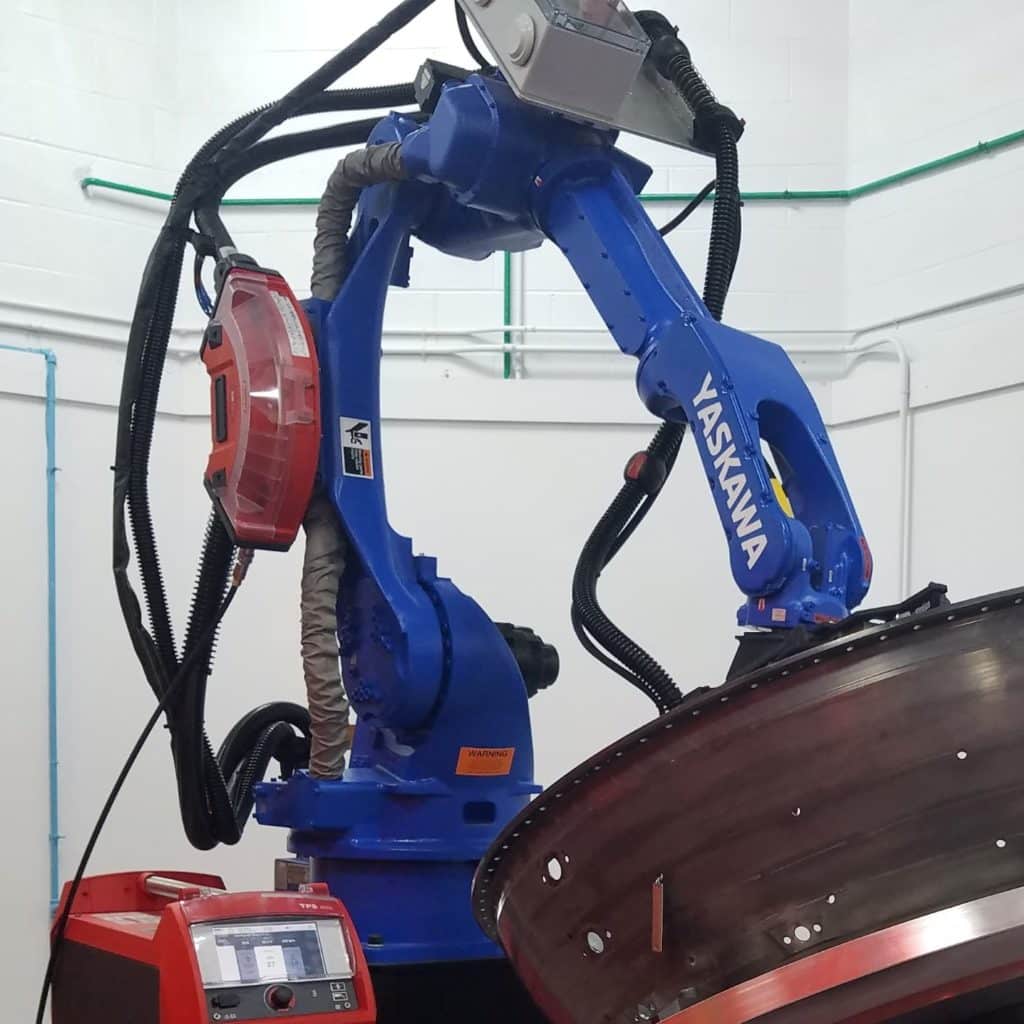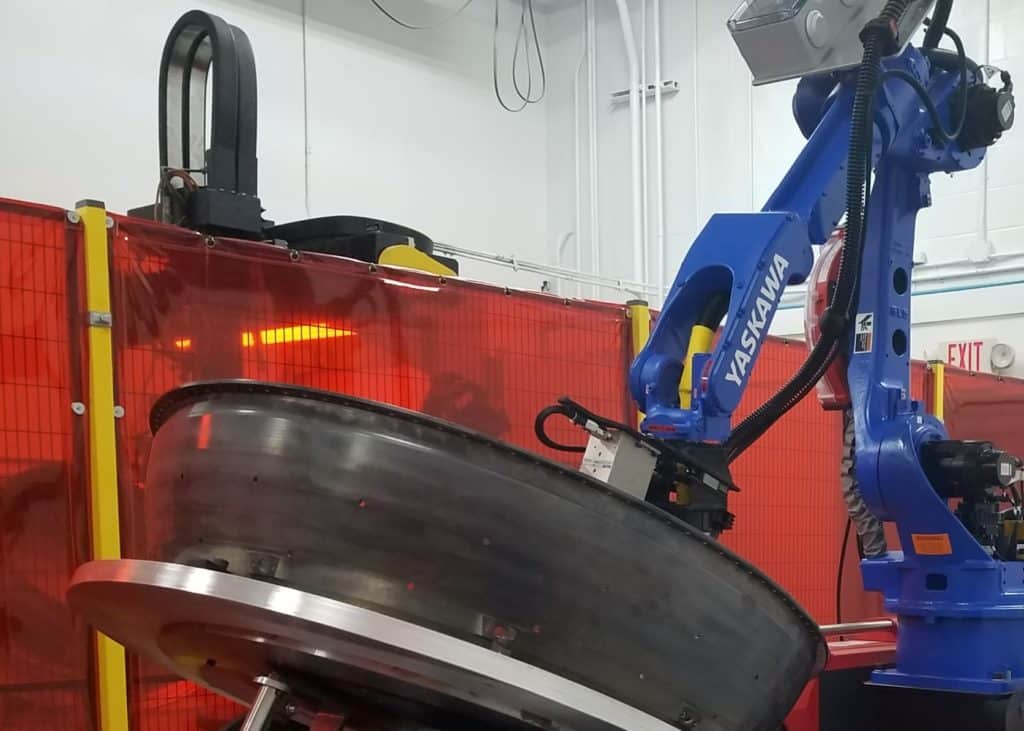Additive Manufacturing Case Study
A company that repairs and rebuilds aerospace components needed a more efficient way to apply filler metal to multi pass welds for rebuilding worn surfaces on jet engine parts. The weld buildup involved applying narrow weld beads on first passes, then using various weave patterns with dwells at peak weave amplitudes to increase the width and manipulate the shape of the weld buildup during additional passes.
Project Challenges
- Provide a robotic welding system that allows both the welding torch and a seam tracking laser to access all weld joints, then moves out of the way to facilitating safe and easy reloading of bulky expensive parts
- Design end-of-arm robotic tooling that will access all welding joints with both the welding torch and seam tracking laser sensor
- Capability that allows a laser sensor to reliably track the joint while the welding torch is weaving with various weave patterns and dwell times
- Positioning the part so all welds are applied in the flat position to optimize welding system performance
- Create a welding system that provides a safe environment for employees reloading parts.
KC Robotics Solution
KC Robotics integrated a system using a Yaskawa MA2100 welding Robot with Fronius CMT welding system. The robot was mounted on a servo track to permit easy reach of all welding joints while allowing the robot to be moved completely out of the way for safe and easy fixture reloading. The parts were fixtured to a tilt rotate positioner, allowing the welding joints to be positioned so welds are applied in the flat position.
KCR designed a light weight, high performance weave oscillator that weaved the welding torch only. The weave oscillator offered precise control of welding torch weave velocity, amplitude, acceleration and dwell times regardless of robot arm position.
Results
- System meets customer requirements for welding performance.
- Use of the weave oscillator eliminated the need to weave the entire arm and wrist mounted laser sensor, which simplified the task of accurately tracking the welding joint.
- The efficient mechanical design of the weave oscillator allowed it to be used on 10 KG payload robot arm without exceeding the payload capacity.
- Employees safety concerns were met with integration of a servo track.
- Customer has higher quality welds at a faster rate.


